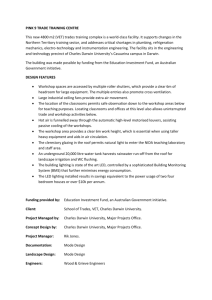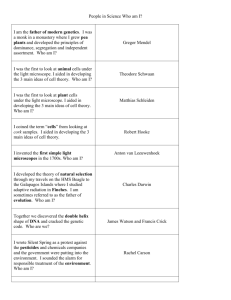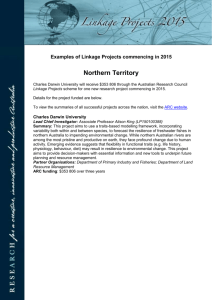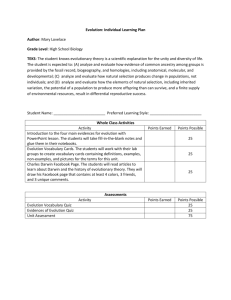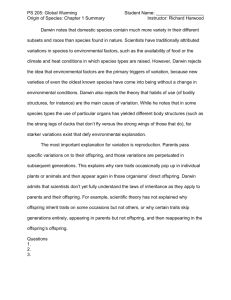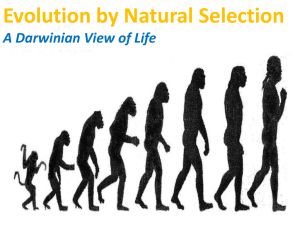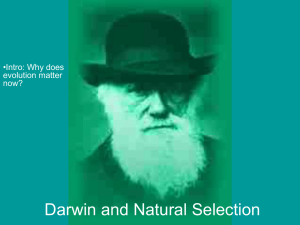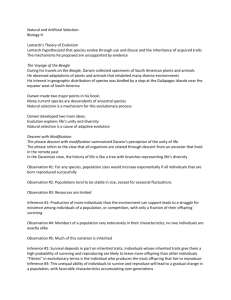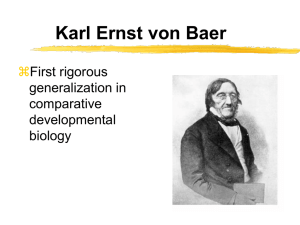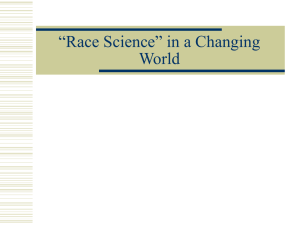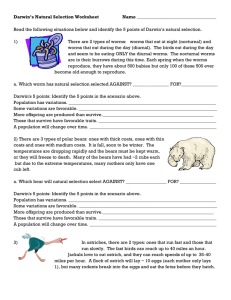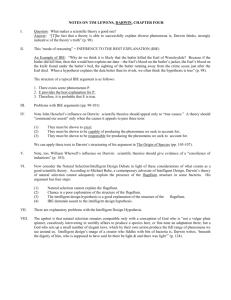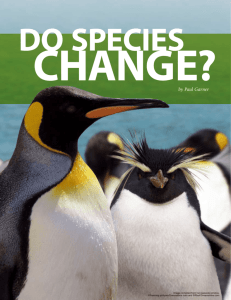Origins of Evolutionary Thought Lecture 1-7, 1-8
advertisement
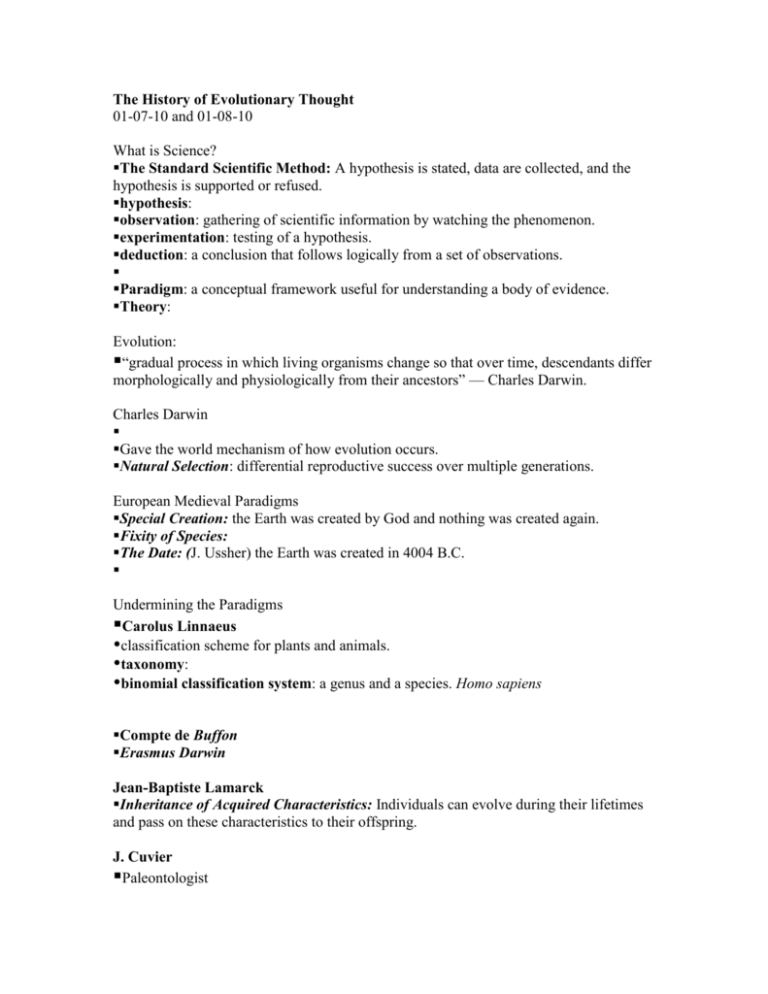
The History of Evolutionary Thought 01-07-10 and 01-08-10 What is Science? The Standard Scientific Method: A hypothesis is stated, data are collected, and the hypothesis is supported or refused. hypothesis: observation: gathering of scientific information by watching the phenomenon. experimentation: testing of a hypothesis. deduction: a conclusion that follows logically from a set of observations. Paradigm: a conceptual framework useful for understanding a body of evidence. Theory: Evolution: “gradual process in which living organisms change so that over time, descendants differ morphologically and physiologically from their ancestors” — Charles Darwin. Charles Darwin Gave the world mechanism of how evolution occurs. Natural Selection: differential reproductive success over multiple generations. European Medieval Paradigms Special Creation: the Earth was created by God and nothing was created again. Fixity of Species: The Date: (J. Ussher) the Earth was created in 4004 B.C. Undermining the Paradigms Carolus Linnaeus classification scheme for plants and animals. taxonomy: binomial classification system: a genus and a species. Homo sapiens Compte de Buffon Erasmus Darwin Jean-Baptiste Lamarck Inheritance of Acquired Characteristics: Individuals can evolve during their lifetimes and pass on these characteristics to their offspring. J. Cuvier Paleontologist catastrophism: theory that there have been multiple creations interspersed by natural disasters. James Hutton proposed uniformitarianism: Charles Lyell “Principles of Geology” Added more to uniformitarianism. These processes acting on the Earth are slow and have shaped the crust gradually. Summary of Undermining the Paradigms challenged the idea of special creation and fixity of species. dismantled the Great Chain of Being through catastrophism and extinction. gave Earth a long history of slow, gradual change. Charles Darwin Sailed on the HMS Beagle to Galapagos Islands to study flora and fauna. Charles Darwin On Galapagos found different kinds of finches that were modified depending on habitat and diet. Adaptive Radiation: Alfred Russel Wallace In 1858 submitted to Charles Darwin a paper describing natural selection. Evolution by means of Natural Selection All species are capable of producing offspring faster than the food supply is able to increase. All living organisms show variation. Individuals with favorable variations are most likely to survive and leave offspring, known as differential reproduction. Favorable variations are inherited and passed on to the next generation; less favorable variations tend not to be. These individuals are said to have higher fitness. Fitness: reproductive success. The ability to survive to reproduce. Over long periods of time, these successful variations can produce great differences that result in new species. the key: an individual has to survive to reproduce not just survive. Adaptation: Evolution: occurs at the population level. Population: Natural Selection occurs at the level of the individual.

